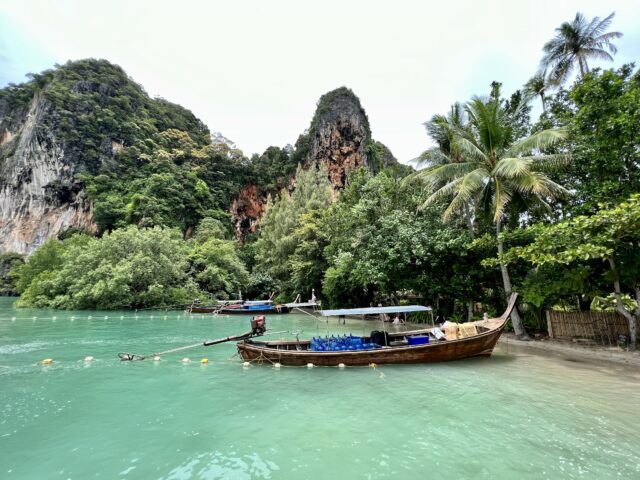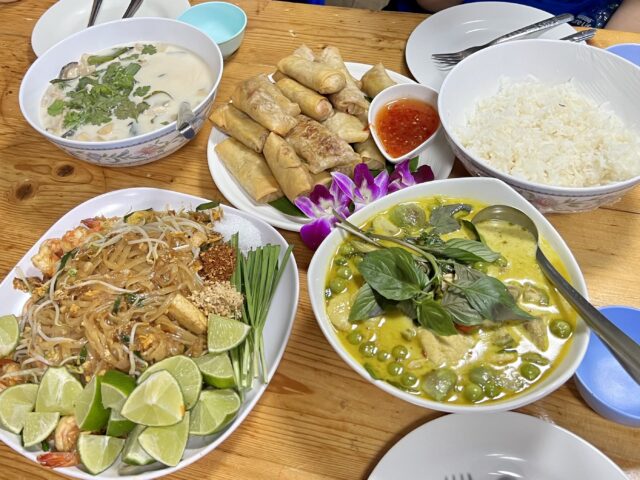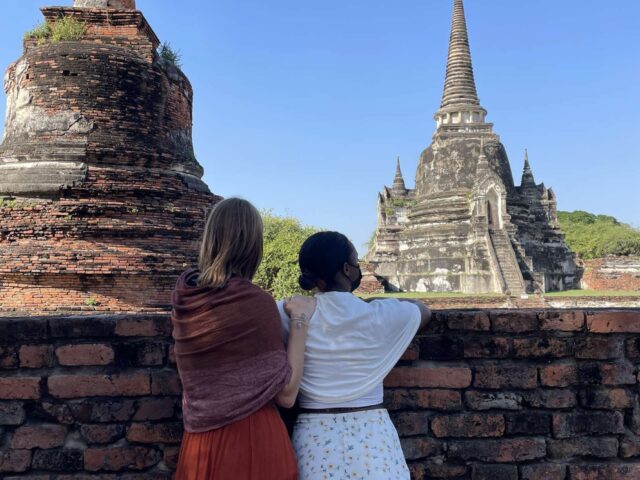Bangkok. The bustling metropolis is not only the Thai capital and one of Asia’s primary travel hubs, it’s often the most visited city in the world, bringing in 20 million visitors in 2018. Whether you’re studying abroad in Chiang Mai, Thailand and looking for a weekend getaway or coming to explore the “Land of Smiles” on break from another Asia Pacific study abroad program, Bangkok should have a high spot on your bucket list.
But where to go? What to see? How to start planning your trip?
There are so many options in the sprawling city that Bangkok can be a little intimidating for the uninitiated. Here’s our guide for what to do for a weekend in Bangkok.
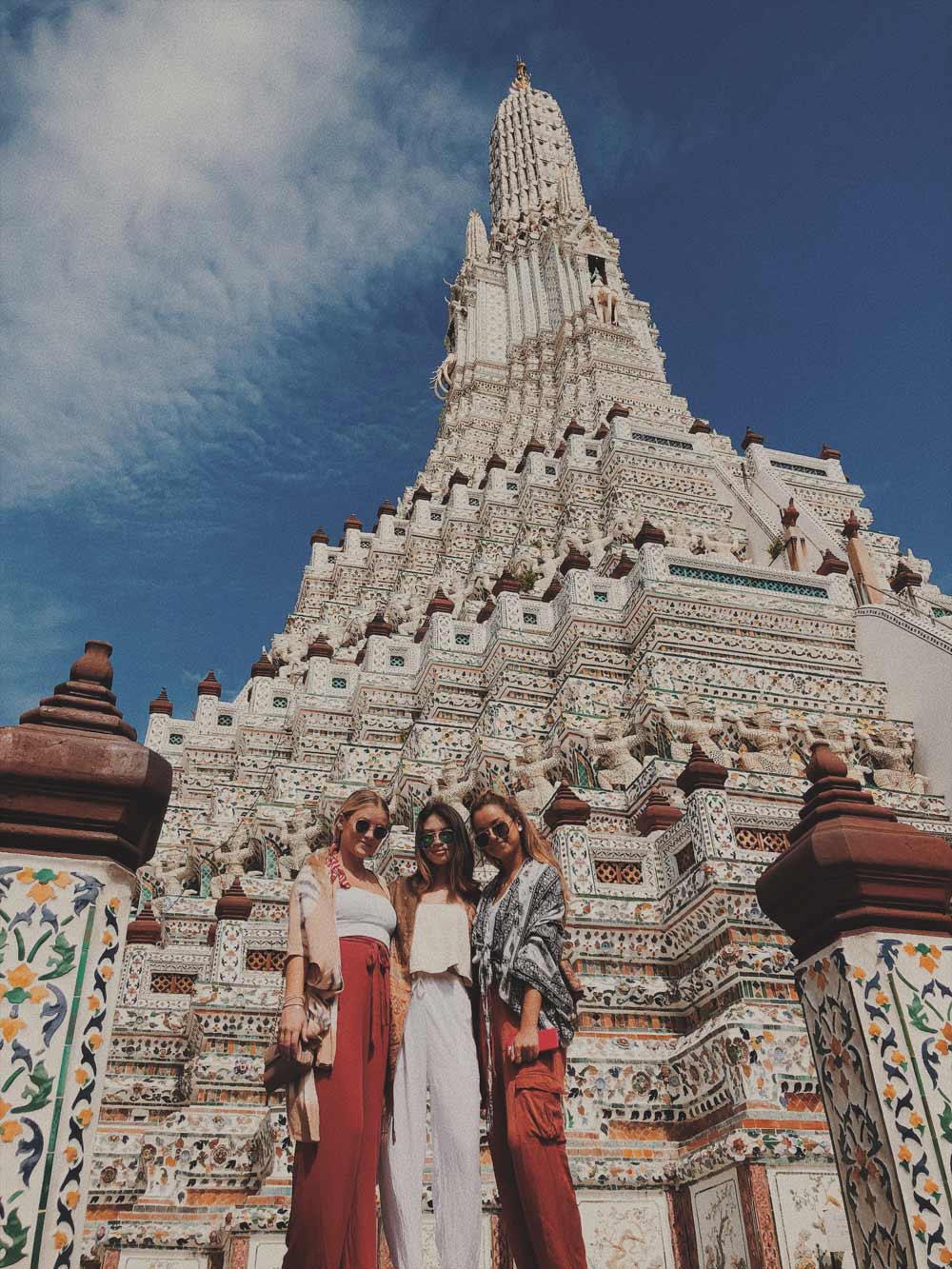
How to Get There
From Chiang Mai, you’ll typically find flights on budget airlines like AirAsia and LionAir for $45-60 round trip, though even cheaper deals are common. (Note that doesn’t include baggage though!) The flight is just one hour and definitely the way to go if you have limited time.
If you want to take the long way for a bit of adventure, overnight buses between Chiang Mai and Bangkok start from around $15 one way or you can take the overnight train which is around $30-45 one way.
If you’re visiting Bangkok from another program, it will be best to fly using one of the regional airlines (like AirAsia). Just make sure you’re aware which Bangkok airport you’re flying into – budget airlines fly into Don Mueang International Airport (DMK) with more expensive and international airlines flying into Suvarnabhumi International Airport (BKK).
Getting Around
Bangkok has a public ‘Skytrain’ system known as the BTS and a subway system known as the MRT. Both are typically the cheapest, fastest way to move around the city but are pretty limited in where they go. Tuk tuks are found throughout the city but are the most expensive and you have to haggle a price before you get in. Taxis are plentiful and surprisingly cheap, just make sure the driver uses the meter to price the ride and don’t go with drivers who try to give you a flat rate instead. You can also download the Grab ride-sharing app (like Uber) which has both taxis and private cars.
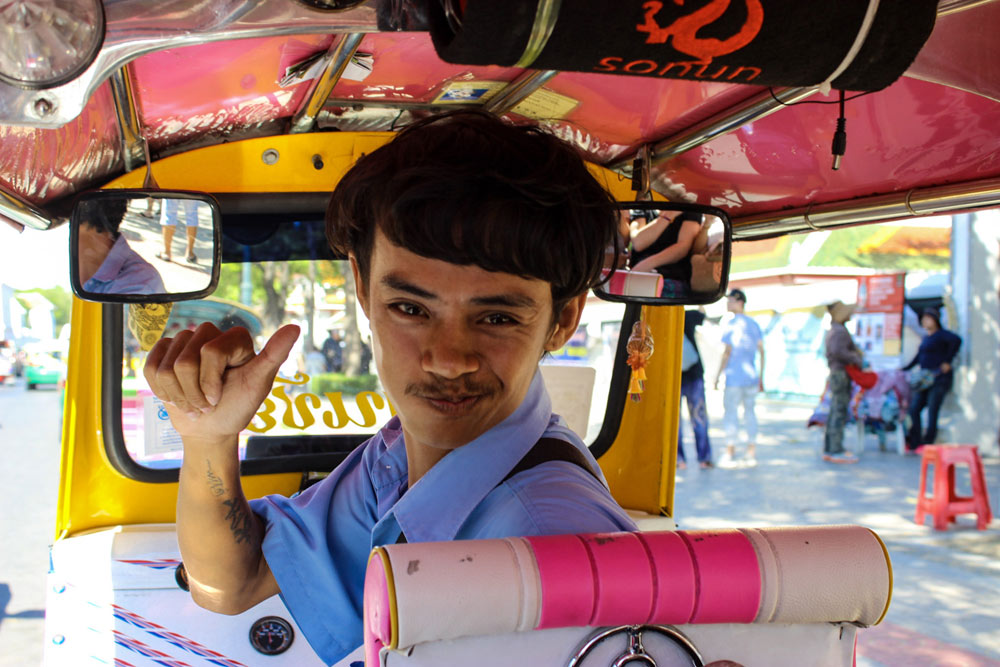
Where to Stay
Most people stay in Bangkok’s old city area near the Grand Palace their first time in Bangkok known as Rattanakosin. For backpackers, that means staying around the infamous Khao San Road where accommodation options are cheap and plentiful, there are always people out and it’s close to the primary culture sites of the palace, Wat Pho and the riverside. The downside of Khao San Road is that it isn’t close to public transportation so you’ll need to continually hail taxis to get anywhere and, since it is a tourist hotspot, you do need to be cautious of tuk tuks trying to majorly overcharge or minor scams like ‘guides’ trying to tell you a certain attraction is closed.
If you’ve been to Bangkok before or want to explore beyond the old city, pick one of the central neighborhoods like Sukhumvit, Ploenchit, Siam or Thonglor that are right along BTS stops. There are hostels throughout the city and you won’t have a problem finding a place to stay. The closer to a station, the better since you’ll get hot and sweaty walking even ten minutes in the city!
What to See
- The Grand Palace – It’s always crowded (and hot!) but the Grand Palace is definitely a must-see spot when visiting Bangkok. Expect to spend several hours here due to the size and crowds.
- Wat Pho – Right next to the palace, the impressive Wat Pho temple is home to a massive 46-meter golden reclining Buddha image as well as a unique collection of porcelain-covered chedis (stupas), Buddha images and more. The temple was also the birthplace of Thai massage and home to the country’s first-ever university.
- Wat Arun – Across the river from Wat Pho is the iconic Wat Arun or “Temple of the Dawn”. You can get there by taking a cheap 4 baht ferry from Tha Tien Pier.
- Siam Museum – In the same area as the palace and temples is the Siam Museum if you want to brush up on your Thai art, history and culture.
- Bangkok Art and Culture Centre – Between the National Stadium and Siam BTS station, the BACC houses changing exhibitions from modern artists and is free to enter.
- Jim Thompson House – Also not far from the Siam BTS station, you’ll find the Jim Thompson House, a gorgeous collection of traditional Thai teakwood homes that originally were the residence of the man who revitalized Thailand’s famous silk production. It may sound a little stuffy, but the place is fascinating and allows you to step back into time when Bangkok wasn’t all concrete and skyscrapers.
- Yaowarat (Chinatown) – Bangkok’s Chinatown, known locally as Yaowarat, offers sensory overload. Wander down the busy sidewalks, grabs some streetside snacks and just see what happens.
- Markets! (see below)
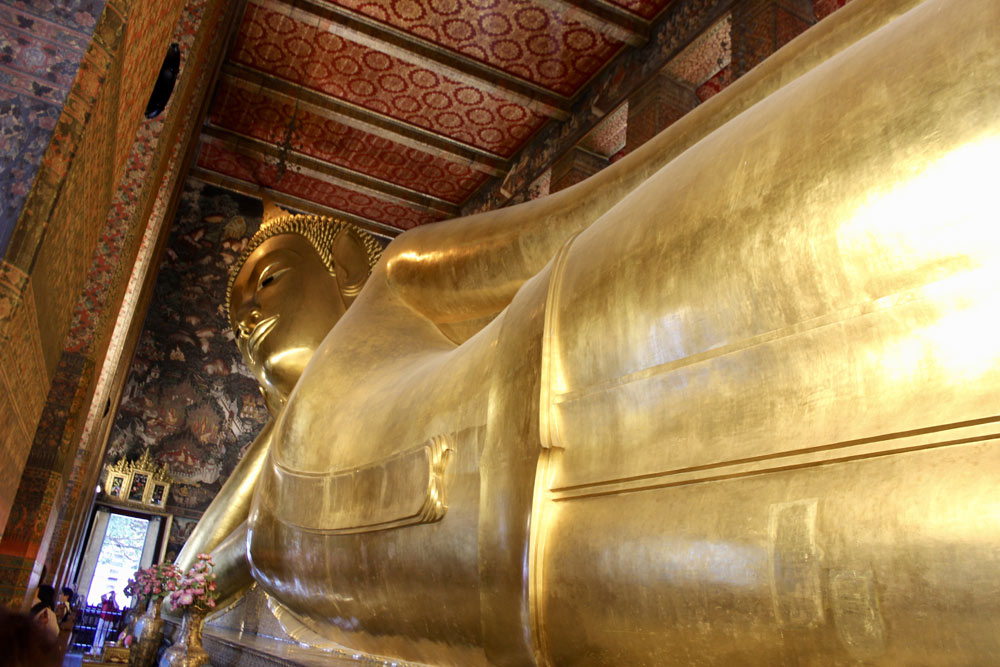
What to Do
Make the most of your time by doing some type of guided tour. Joining a tour will mean throwing down some more money rather than doing it alone…but you’ll get bang for your buck by being able to fit in a lot of sites and experiences into a short time. The nighttime tuk tuk tours from Expique are excellent and a great way to see a lot of the city you wouldn’t be able to do on your own (plus snacks and dinner!). A canal, or khlong, tour is also an interesting way to explore a more historical side of the city. Formerly known as the Venice of the East, Bangkok was originally built around a complex system of canals that were used to get around. Today, many of the canals have been filled in by the city’s streets but there are still a number of working waterways.
Where to Shop
Bangkok has some crazy big markets where you never know what you’ll come across next. The weekend Chatuchak Market (also known as JJ Market) has literally thousands of stalls selling everything under the sun. The student-geared nighttime Talad Rot Fai is also massive and has several locations, the easiest to get to being Talad Rot Fai Ratchada.
Near the Grand Palace, the amulet market along Maha Rat and Phra Chan Roads is worth a walkthrough. Then, south of the Grand Palace along the river, Pak Khlong Talad is the city’s largest wholesale flower and produce market. Open 24/7, there’s always something interesting to see…just don’t get in the way of the vendors and delivery guys hauling towering stacks of flowers through the narrows paths!
Bangkok is also known for its high concentration of massive shopping malls. Siam Paragon is the most well-established and known around the world (with sister shopping centers Siam Discovery and Siam Square One right next door) but Terminal 21 and MBK Center are more popular with those on a budget. If you want to gawk at luxury brands, head to Central Embassy or Emquartier.
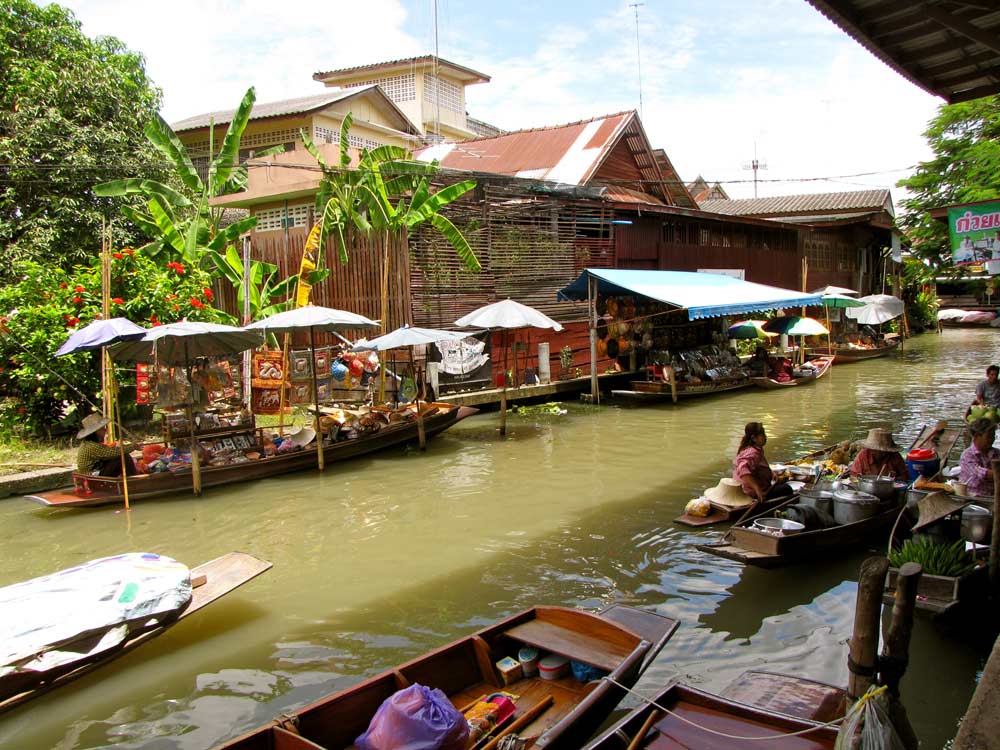
Where to Eat
Figuring out where to eat in Bangkok is both easy and hard at the same time. There is food literally EVERYWHERE…so how do you choose where to go? During your first time in the city, you’ll probably just pop into wherever looks good – you’ll seriously find food within walking a few minutes in any direction. Overall, food is more expensive than in Chiang Mai, but there are still a lot of highly affordable options especially when eating on the street.
Around Khao San Road there are a ton of street stalls and local restaurant options. Behind Khao Road along the river, the Phra Athit neighborhood is a little less backpacker-y and a little more artsy with some cute cafes and restaurants. Right near the Grand Palace there are also several options, although usually with slightly higher prices since they cater to tourists.
It sounds kind of silly, but all the shopping malls have pretty incredible food courts where you can find a range of Thai street food favorites for reasonable prices…plus air conditioning! And, of course, markets are a great place to go for a meal as well as shopping.
If you want to find some specific restaurants to check out, browse the BK Magazine website – it’s by far the best English resource for restaurant listings and what’s going on in town.
It’s also always fun to toast the trip at one of Bangkok’s rooftop bars like Above Eleven, Red Sky Bar at Central World, or Vertigo & Moon Bar at Banyan Tree Bangkok. While only a few stories high, the rooftop bar at sala Rattanakosin boutique hotel (near the Grand Palace) boasts incredible views of the sun setting behind Wat Arun. Reservations are smart if you can get them for sunset and most bars have a dress code that doesn’t allow flip flops or men in tank tops. Drinks are pricey – you’ll just want to go for one then move on – but worth it for the experience.
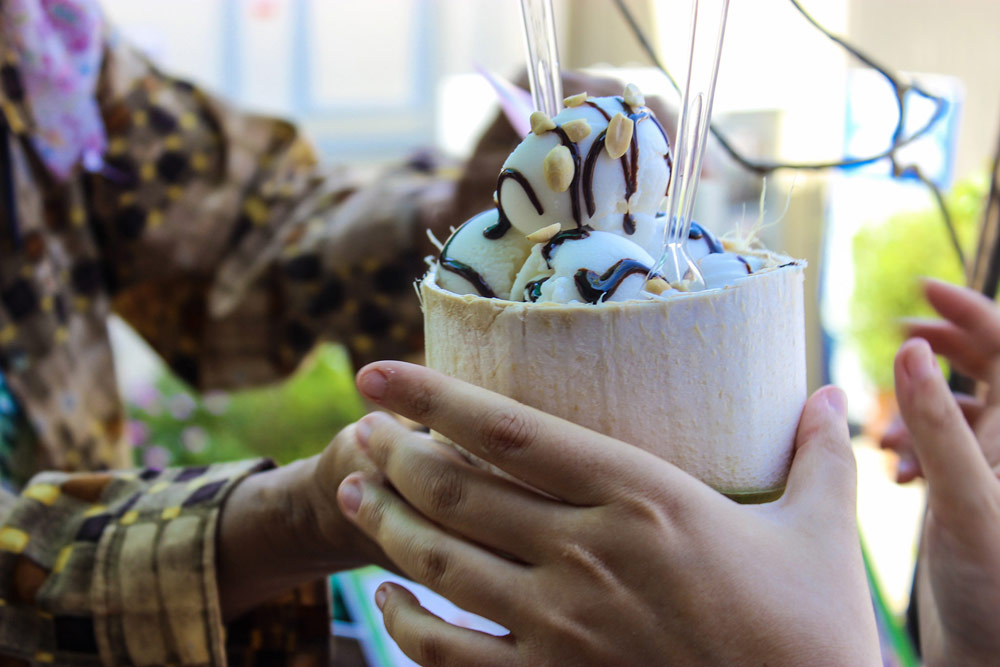
How to Plan Your Time
Bangkok is big, busy, hot, humid and completely gridlocked much of the time. Plan for extra time getting places and try to do walking or outdoor activities in the morning when it’s not quite so hot. It’s usually best to only plan two to three activities or sightseeing stops a day (another reason guided tours are so great since you can fit a lot in) and make sure to stay hydrated so you can continue exploring!
Explore TEAN programs in Thailand! Or ask us a question.


